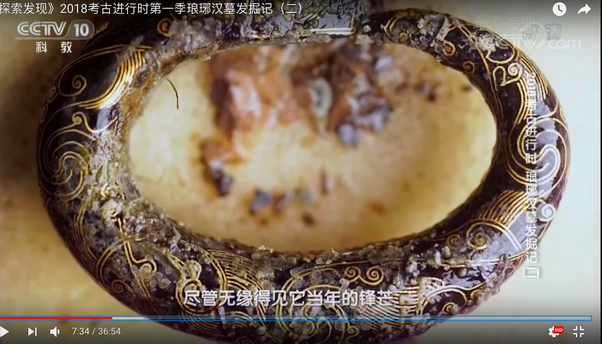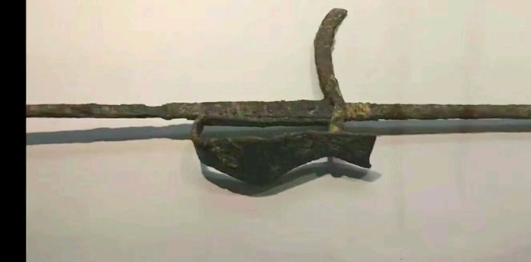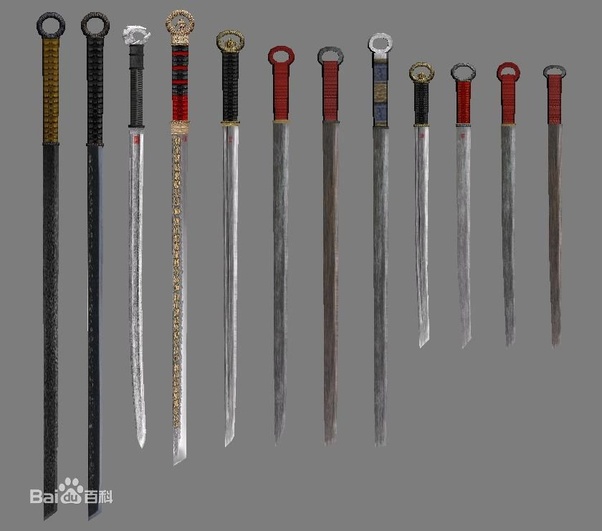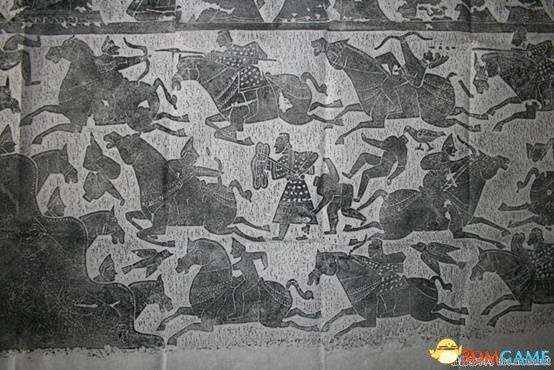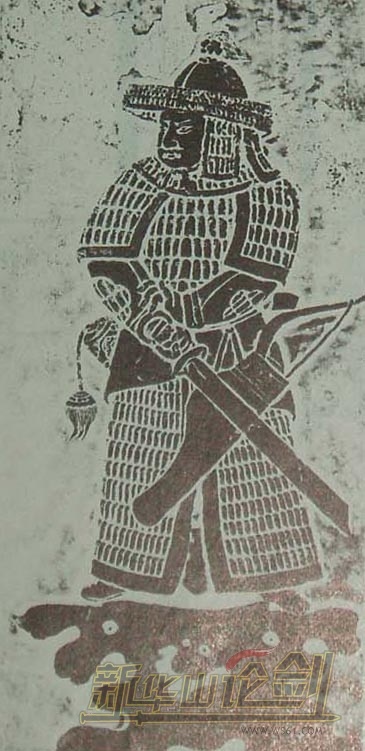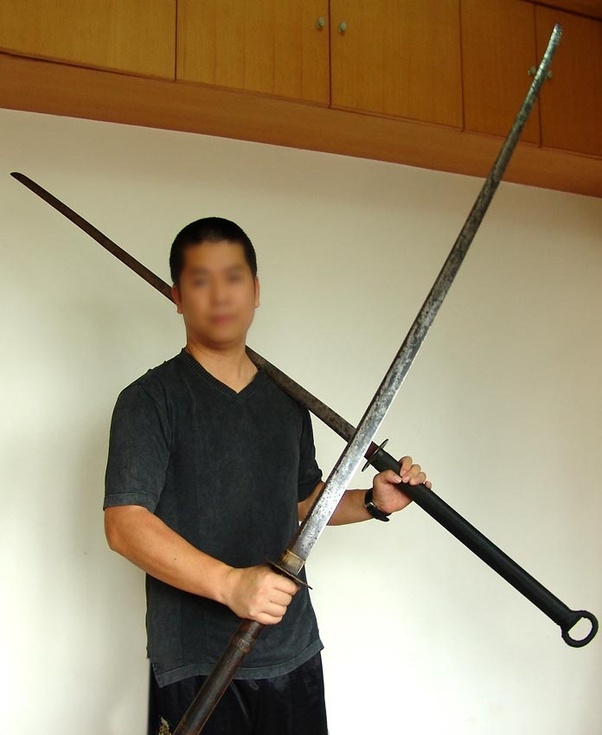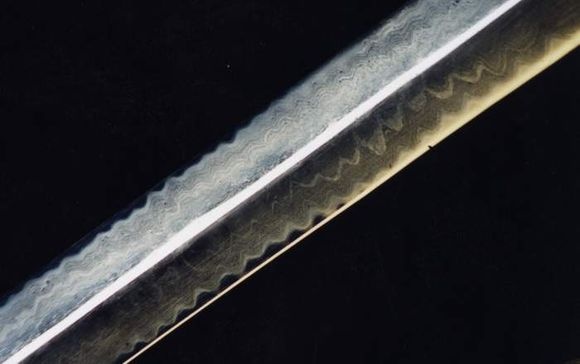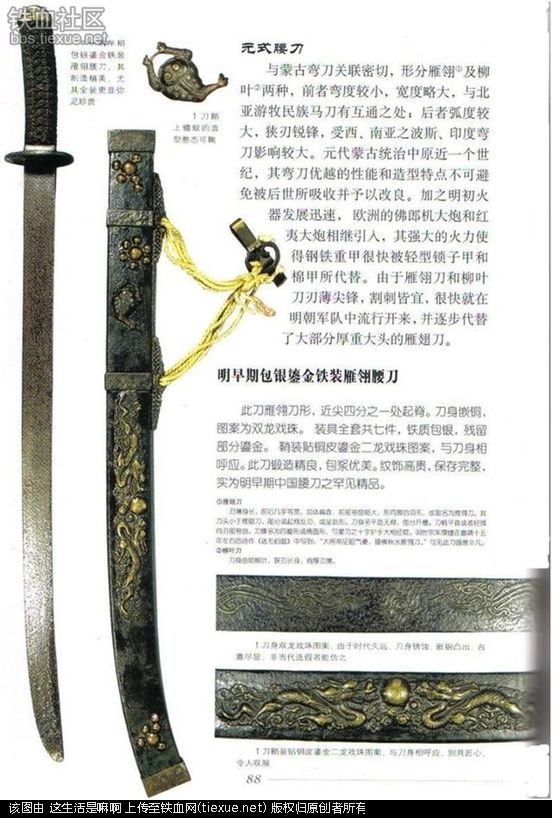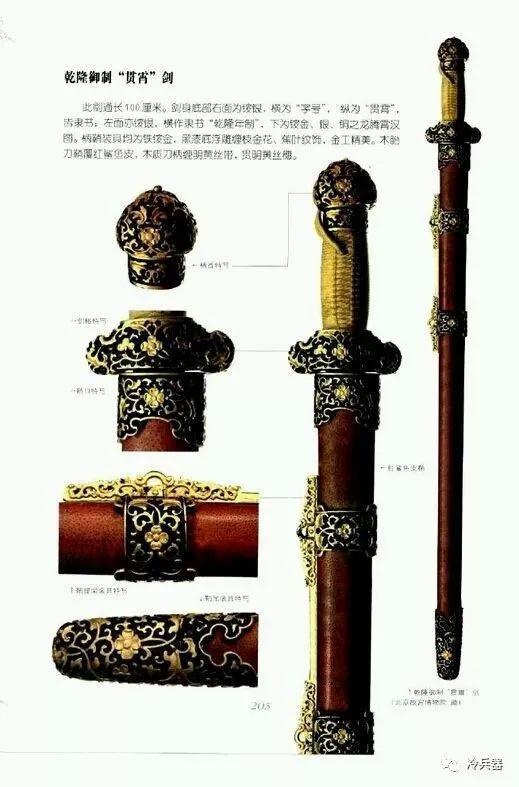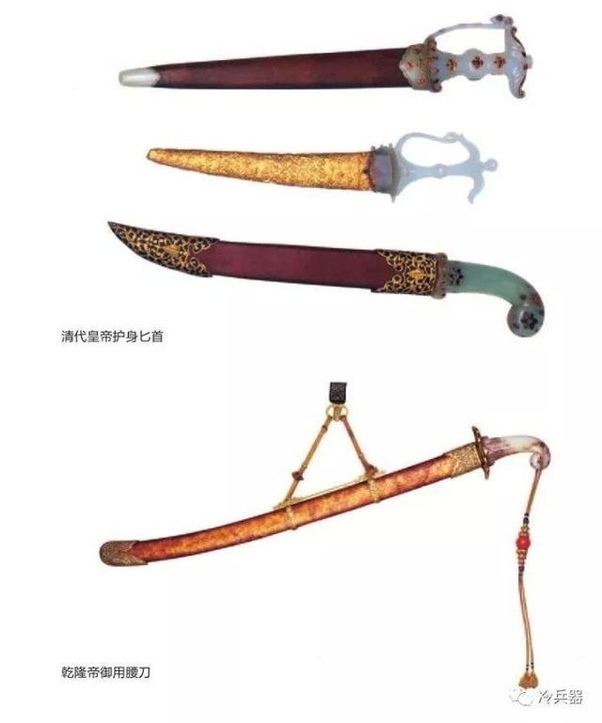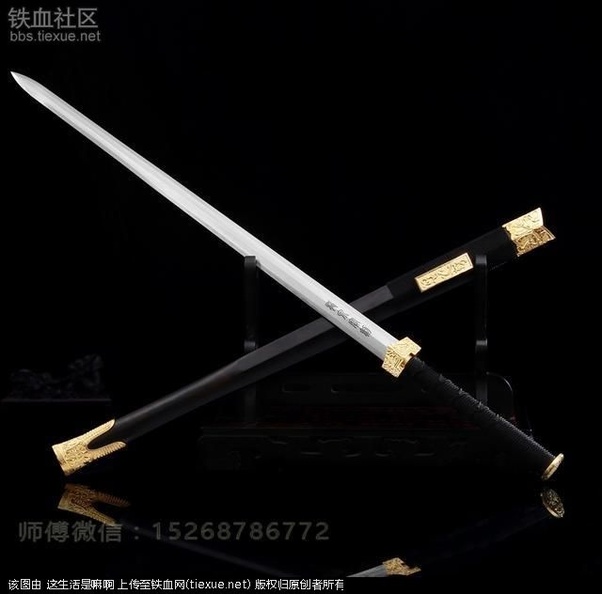有哪些犀利的中国剑? [美国媒体]
quora网友:历史上中国有许多犀利的剑。因为中国剑在海外并不知名,我将贴出各个时期的剑作为例子。中国所有的王朝都有一些犀利的剑,这些是早期用骨或铜制作的剑。
What are some awesome Chinese Swords?
有哪些犀利的中国剑?
Wic Wong, works at River Café
Updated Jul 31There are many awesome Chinese swords throughout history. Since Chinese swords are not well-known outside of China, I will provide examples of awesome swords within each time period.There are some awesome swords in all Chinese dynasties.These are some earliest swords made of bones or bronze.历史上中国有许多犀利的剑。因为中国剑在海外并不知名,我将贴出各个时期的剑作为例子。中国所有的王朝都有一些犀利的剑这些是早期用骨或铜制作的剑。
Some other weapons and tools from early periods:This one is from the Shang dynasty一些其它的早期武器或工具这个来自商朝
Here are some swords from the Zhou dynasty:This is the oldest iron sword excavated in China so far.这是些来自周朝的剑。这是止前为止中国发现的最早的铁剑。
Here are some swords of the Eastern Zhou period:这些是西周时期的
These are the swords from the state of Qin:这些是来自秦国的
This is a steel sword from the warring states period:这是一把来自战国时期的钢剑。
This is the famed sword of Goujian:这是着名的勾践剑。
Some of the swords have a harder edge and softer core, these are called two coloured swords:一些剑边缘硬,核心软,称为两色剑。
The Han dynasty’s swords (206 BC–220 AD) saw great advancements in metallurgy.During this time period, according to the book “中国古代军事工程技术史”, all the single-edged and double-edged swords examined were made of steel, only one of the halberds were made of wrought iron. The longest one excavated had a length of 1.6m. The longest recorded sword in Han dynasty was around 1.72m long.汉剑在冶炼方面取得了巨大的进步。在这个时期,根据《中国古代军事工程技术史》一书,所有的单刃剑和双刃剑都被证实是用钢制成的,只有一把戟是由熟铁打造的。发掘出来的最长的长达1.6米。纪录中最长的汉剑长达1.72米。
There are many myths on the internet. One of them said that Chinese swords were mostly made of iron not steel. This is probably due to the translation because the Chinese use the term “iron age” instead of steel age, and “iron weapons” instead of steel weapons.Another widely told myth is that Chinese use cast iron to cast swords which are brittle. Yes, the Chinese do cast iron tools, but they don’t cast iron weapons, with the exception for some arrow heads. What the Chinese blacksmith did was they de-caburized the liquid metal by stirring and blowing air to release the carbon. In this way, they can get low, medium, or high carbon content steel before the forging process, so that it is no longer cast iron and brittle. This is actually an advancement in metallurgy because the steel would contain less impurities, have universal carbon content throughout the whole blade, and would have better production efficiency. This is explained here:网络上有许多谣言。其中有说中国剑大多数都是用铁而不是钢制成的。这大概是出于翻译原因,因为中国使用名词铁器时代代替钢器时代,用铁兵器代替钢兵器另一个广泛传播的谣言是中国人使用铸铁铸造易碎的剑。是的,中国制造铸铁器具,但他们不制造铸铁武器,除了一些箭头。中国铁匠的做法是通过搅拌和鼓风来去碳。通过这种方式,他们能在锻造前就得到高中低含碳量的钢,所有不存在熟铁和铸铁。这是冶炼上的进步,因为钢里的杂质更少,全身有更普遍的含碳量,生产效率更高。以下是解释:
cast iron→blow air into the liquid iron and stir to become steel or wrought iron→forging→quenchingThe following are some Han dynasty swords shown in Museums.铸铁->鼓风进入铁水中搅拌使其成为钢或熟铁——>锻造——>焠火以下是博物馆中展示的一些汉剑。
This is a newly excavated Han dynasty sword with intact lacquered sheath, found in a tomb in Shan Dong province recently.这是最新发现的汉剑,有着完整漆色的剑鞘。
These are swords from Western Han dynasty. They have have hand-guards very similar to western sabres and long swords.这些是来自西汉的剑。它们有非常接近于西方军刀和长剑的护手。
These are Han dynasty daggers:这些是汉代短剑。
The reason why Han dynasty swords can be made long and thin is because it’s very flexible. Here is one of the tests that I’ve found:汉剑能造得又长又细的原因是它非常柔韧。这是我找到的一个测试。
and this one is a polished sword from Han dynasty with carburized-hardened edges and a softer core:而这是磨光后的一把汉剑,有着碳化的硬刃和一个软心。
Double edged swords fell out of favour during the Han dynasty, and gradually single-edged sword became the norm on the battle field. Spanning from the Han dynasty to the Tang dynasty, that is from the 2rd century BC to the 10th century, this kind of sword is the main secondary weapon on the battlefield. This type of sword is found throughout East and NE Asia including China, Korea, and Japan and is believed to be the prototype of the famed Japanese katana.These are Han dynasty single-edged swords:双刃剑在整个汉朝逐渐式微,单刃剑逐渐成为战场主流。从汉代到唐代,从2世纪到10世纪,这种剑是战场上的主要次要武器。这种类型的剑遍布东亚和东北亚,包括中国、朝鲜和日本,据信也是着名的日本刀的原型。这些是汉代单刃剑:
This is the longest single-edged sword found, at about 1.46m.这是一把长单刃剑,大约1.46米。
Here is a polished Han dynasty single-edged sword excavated from a tomb in Guangxi province:You can clearly see the patterns formed by repeated folding process.这是在广西省一处墓中发现的一把汉代磨光单刃剑。你可以明显看到反复叠打形成的纹样。
A section on the corroded spine shows the layers formed by folding of the steel:
there were very few metal slags in the sword:剑身只有很少的矿渣。
Here is another polished Han dynasty single-edged sword:这又是一把磨光汉代单刃剑。
It comes in a variety of lengths and ring designs:The ring is used to prevent slipping and had a string attached to the wrist. Many swords had a slight inward curve.
The ring-pommel-single-edged swords are also found in Japan and Korea as well.numbers 1,2,4,6,7,8,10 are found in Japannumbers 3,5,9 are found in Korea环首刀在日本和朝鲜也有发现124678,10是在日本发现的359是在朝鲜发现的。
These three ring-pommel-single-edged swords are displayed in Korean museums这三把环首刀陈列在朝鲜博物馆里。
In the early periods, the swords are hooked onto the belt, sort of like this:在早期,剑是挂在腰带上的,像这样。
And these swords were used in conjunction with a shield during the Han dynasty.这些剑在汉代与盾牌搭配使用。
These three pictures are Han troops fighting the Xiongnu:You can clearly see instead of hacking, these swords seems to be used as a stabbing weapon for the infantry units.这三幅图是汉军击匈奴。你可以清楚地看到不是砍,而是被步兵用来刺。
Another evidence that single-edged swords were used mainly as a stabbing weapon comes from the shield. The shield were usually 60–90cm vertically 45–60cm horizontally which makes it hacking motion very difficult without moving the shield out of the way. The shield’s edge is also not smooth and some sections protrudes out from the edge, thus it would greatly hinder the hacking motions, as the sword could be jammed on the shield’s protruding parts. If you use the sword as a stabbing weapon, however, then the protruding edge can provide some resting place for the sword. Since the Chinese swords at the time were quite long, it makes sense to have some resting place for a stabbing sword.另一个单刃剑主要用来刺的证据来自盾牌。盾通常长60-90cm,高45-60cm,这造成如果不把盾移开的话,很难进行劈砍。盾牌的边缘并不光滑,有些地方还突出,会极大地阻碍劈砍,因为剑很可能卡在突出上。如果你把剑当刺击武器用,盾牌的突出就可以作为剑的抵靠物。因为中国剑很长,所以弄些给刺击武器使用的抵靠很有意义。
The single-edged swords had thicker spines, providing more durability on the battle field.I speculate, based on all the carvings of battle scenes, this type of sword was actually used as a stabbing weapon for the infantry, and as a slashing weapon for the cavalry. This seemed to be the reason why it needed strengthening. In addition, there was almost no chain mail armours in East Asia, except for Tibet, so there is no need to have a very pointy-tapered tip to force open the rings of the chain mail.Some people suggested the replacement of double-edged swords by single-edged swords was due to the use of cavalry, but this fails to explain why it was used in large quantities by the infantry.Some other people suggested it was cheaper to make one edge than two edges. It was a good argument, but it still fails to explain why even generals and bureaucrats started to favour this type of sword over the double-edged swords when the transition was happening, and it didn’t explain why successive dynasties also favoured this type over the double-edged swords, even though economic conditions improved during all this time.In my opinion, the replacement means single-edged weapon can, in theory, take more blows than the double-edged swords, and for a stabbing weapon it is important to have a sturdier build.单刃剑更厚的剑脊在战场上带来的更多的更耐用。根据战场场景的雕刻,我推测这种武器被步兵用来当作刺击武器,被骑兵作为挥砍武器。这就是它为什么需要加固的原因。此外,除西藏外东亚没有锁子甲,所有不需要尖尖的刀尖来开甲。一些人用单刃剑替代双刃剑就是为了挥砍,但这不能解释为什么在步兵中大量使用。另一些人说单刃比双刃成本低。这是一个很好的观点,但仍不能解释为什么在过渡时期将军和士官比起双刃剑更喜欢这种,也不能解释为什么历代王朝即使在经济条件好的时候也更喜欢这种剑而不是双刃剑。在我看来,这种取代意味着单刃剑理论上能够比双刃剑承受更大的冲击,对刺击武器来说,坚固性是很重要的。
These are Sui and Tang dynasties’ single-edged swords:The main difference between Han dynasty and Sui & Tang dynasties’ swords lies in the fitting. The Sui and Tang dynasties used Persian fitting for their swords, and instead of hooking onto the belt like the previous Han dynasty ones, they were hung from the belt with two strings. This allowed for a quicker draw of the sword out of the scabbard, but the swords became shorter as a result.这些是隋唐王朝的单刃剑:汉剑和隋唐剑的主要区别在于佩带方式。隋唐用波斯装置,与汉代挂在腰带上不同,它们用两根绳系在腰带上。这使得抽刀更快,但相应地,剑身变短了。
These are Song dynasty’s single-edged swords:Song dynasty swords are wider and shorter. The practice of welding a harder steel edge onto a softer iron spine, though was practiced earlier, became popular during this period. Even spears were made in this way.这是宋代单刃剑。宋剑更宽更短。较早的实践中,将较硬的钢刃焊接在较软的铁脊上的做法在这一时期流行起来。甚至矛也是这么做的。
Here are some Ming dynasty and Qing dynasty swords:The swords during this period had harder steel edges inserted into a softer spines这是一些明清刀剑。这一时期的刀剑将较硬的刀刃嵌入到较软的刀脊中。
This is the “horse teeth” edge.这是马齿边。
The harder edge would be inserted into a softer spine, and then it was hammered and whetted to make it smooth, forming the “horse teeth” edge.较硬的刃边嵌入到软软的脊背中,然后锤打磨平,形成马齿边。
The hamon line was formed using differential hardening—the process of localized quenching without quenching the spine, thus providing a stronger edge and softer spine which prevents the sword from breaking. This technique appeared on some of the swords as early as the Han dynasty.hamon线是用差别淬火的方式形成的——局部淬火而不淬刀背,这就造就了硬刃与软背,使得剑身不易折断。这种技术早在汉代就已出现。
The Qing dynasty’s swords are the best preserved swords in China:
The emperor Qian Long had some of the best preserved swords and daggers:乾隆皇帝拥有一些最好的佩剑和匕首。
Here are some modern day reconstructions:
Avery Blankenship
May 3Looking through this answer, I was thinking about why Chinese swords are not that famous or people do not really know a lot about them.These swords are good swords, and all are clearly practically designed, and would be very useful on the battlefield. However, that is about it.They change quite a bit through the ages, and while always pretty good, never particularly distinctive. In other words, while working, they don’t have the style of the Japanese Katana or the European Longsword. That isn’t to say they are not beautiful, just not distinctive/they don’t stick out.It is sort of like how Arabian swords are not particularly interesting to many people. They have had quite a few through the years, but very few have ever gained lots of popularity - the most popular just being the scimitar.看完这篇回答,我在想为什么中国剑并不知名,或者说人们并不所知太多。这些刀剑都是好刀剑,都是明确的实用设计,在战场上非常有用。然而也就这样了。历经岁月它们改变了很多,都很好,从不特别与众不同。换句话说,在使用的时候它们没有日本刀或欧洲长剑那样的风格。 这不是说它们不漂亮,只是不特别/不突出。这有点像阿拉伯刀剑对许多人来说并不特别有趣。经年以来, 他们有许多刀剑,但其中很少能引起大量人们的欢迎——最受欢迎的只有半月弯刀。
Wic Wong
May 3 · 1 upvotewell, part of the reason, in my opinion, is publicity. If you look at Japanese katana, how many times were they featured in movies and manga? How many times do you see a Chinese sword being featured? I mean Japanese katana looks beautiful and elegant and they were well-preserved—some swords were from the 7th century and were untainted by rust—but they were featured so many times that the image are engrained in people’s mind. But it is up to people’s preference. I am not saying that with more publicity more people will like Chinese swords, but definitely people will know more about it.好吧,在我看来部分原因在于宣传。如果你审视日本刀,它们在电影和漫画中有多少刻画?你又看到过几次中国刀剑的刻画?我意思是说日本刀看起来漂亮、优美、保养得当——一些刀从7世纪起流传至今,没有被沙尘洗礼——它们被刻画如此多次,在人们脑中生根。但这取决于人们的喜好。我不是说随着宣传的增多,更多的人会喜欢中国刀剑,但是可以确定人们会对其了解更多。
版权声明
我们致力于传递世界各地老百姓最真实、最直接、最详尽的对中国的看法
【版权与免责声明】如发现内容存在版权问题,烦请提供相关信息发邮件,
我们将及时沟通与处理。本站内容除非来源注明五毛网,否则均为网友转载,涉及言论、版权与本站无关。
本文仅代表作者观点,不代表本站立场。
本文来自网络,如有侵权及时联系本网站。
图文文章RECOMMEND热门文章HOT NEWS
- 1
Why do most people who have a positive view of China have been to ...
- 2
- 3
- 4
- 5
- 6
- 7
- 8
- 9
- 10
推荐文章HOT NEWS
- 1
Why do most people who have a positive view of China have been to ...
- 2
- 3
- 4
- 5
- 6
- 7
- 8
- 9
- 10
























